Not Getting Traffic From Rich Snippets? Avoid These 3 Common Mistakes We’ve Seen Everyone Make
by
Jeremy Tang - Updated
12-Jul-2024

Not getting the traffic and clicks you want from your rich snippets? We’ve identified three common mistakes everyone makes that could be holding you back. Studies have shown that using structured markups like rich snippets can boost click-through rates by up to 30% (Source: Search Engine Land).
For example, a Sydney-based ecommerce site saw a 21.3% increase in organic traffic by optimizing their rich snippets. Avoid the common pitfalls that many face by discovering how to effectively optimize your SEO. Learn which types of snippets can dramatically enhance your site’s performance and transform your digital presence.
If you are confused with all the terminology, just remember:
Rich snippet = rich results.
Featured snippet is a subset/type of rich snippet.
To help you understand what a rich snippet is, it’s best to first figure out the concepts of structured data and schema markup.
Think of the internet as a massive supermarket. In this digital marketplace, schema markup acts as the seasoned sales associate in the store.
Schema markup is a standardized language developed by major search engines that helps organize and interpret your website’s content. This system uses a set of tags embedded in your webpage’s HTML to provide search engines with clear and structured information, much like a sales associate explaining product details to customers.
Now, think of structured data as the product labels in the supermarket. These labels contain organized, detailed information about your web page’s content, metadata, and the actions users can take. Structured data is what you want search engines to understand, and schema markup is the tool that communicates this information effectively.
Finally, rich snippets are the enhanced search results that stand out on Google’s results pages.
These snippets are like the attention-grabbing product booth in this supermarket. They include extra information directly on the SERPs, making your search results more appealing. This additional data, drawn from your structured data via schema markup, can showcase star ratings, images, event details, or other relevant content.
Rich snippets and featured snippets are both enhanced search features.
Rich snippets are good for SEO because
Here’s some examples of what your rich snippets can show:
Here’s an example of a sitelink showing up in SERP, handy for users to choose the most relevant page(s) to click into. In this example, users can click straight into the green dress product page or click into the generic dress collection page.

Here’s an example of star ratings, reviews, price, availability/in stock. At one glance, users know important information such as price and availability. They know how many people have rated the product well and this entices them to check the product out.

Featured snippets, on the other hand, show a concise, direct answer to a search query first, before the link to the source page.
For instance, if you search for “How do you use a French press?” Google might display enhanced snippets that provide a step-by-step answer directly on the search results page, as shown in the example below:
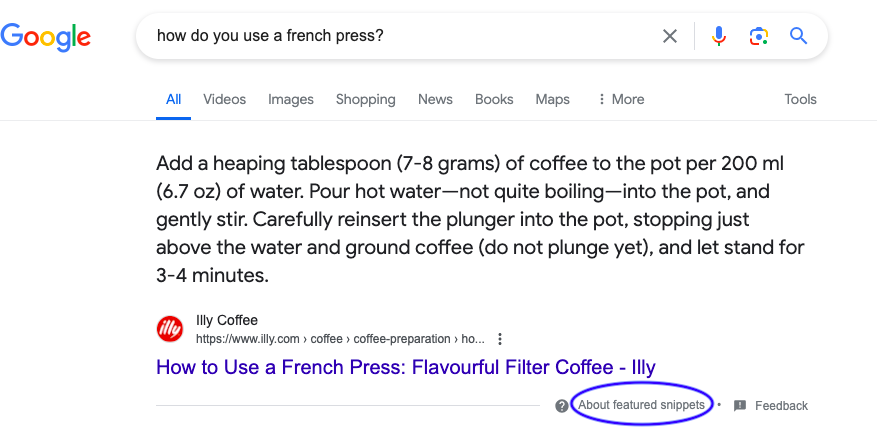 Featured snippets are good for SEO because
Featured snippets are good for SEO because
Rich snippets can significantly increase your listing’s CTR, and, as a result, drive more traffic to your website. Studies have even indicated that using structured markups like rich snippets can boost CTR by up to 30% (Source: Search Engine Land).
Additionally, search engines tend to favor pages that use structured data correctly because they can understand them better – the same data that enables rich snippets. Over time, this can improve your search rankings and significantly increase organic traffic.
Increased Attention and Recall
Compared to text-only information, visuals are more likely to grab users’ attention. This increased attention often leads to better recall and recognition of the information, which plays a crucial role in the decision-making process when sifting through search results.
Here’s the catch: you won’t see these kinds of numbers in your KPIs unless:
Let me tell you a story.
A Sydney-based ecommerce website offering baseball gear and equipment initially saw success with their rich snippet strategy. They were neither a startup nor a huge corporation, but a growing business eager to boost their online presence.
Before partnering with us, they implemented a couple of rich snippets for their top-selling products, including their best-selling baseball bats and gloves. This effort led to a 12.1% increase in traffic to these product pages.
Encouraged by the results, they decided to create additional rich snippets for their less popular products, such as protective gear and training equipment.
What made them decide to partner with us?
Unfortunately, they did not see any of these new snippets appearing in SERPs, nor did they notice any increase in metrics. To make matters worse, traffic for their top-selling products became stagnant, and they began facing multiple crawling and indexing issues.
Hence the client decided to partner with us as their SEO agency that could highlight and fix the issues for them. Our first step was to correct their structured data and schema markup.
We also discovered that their site’s ranking for the formerly top-selling pages had declined due to a recent Google update. We reoptimized these pages along with their other pages, fixed duplicate content issues, improved site speed, and refreshed content using buying-intent keywords.
Once the website began gaining traction, we properly implemented appropriate rich snippets and optimized their metadata for these URLs. In eight weeks, their organic traffic increased by 21.3% for the top-selling products, and the URLs for less popular products saw a 19.8% rise in visibility.
To amplify their site’s CTR and traffic further, we implemented our programmatic SEO approach. Our solution was to maximize their coverage by targeting longtail terms through leveraging our proprietary CMAX™ technology.
The client saw a 46.7% increase in organic traffic for their best sellers and a 30.2% increase in organic traffic for their other products in just nine weeks after we implemented our programmatic SEO.
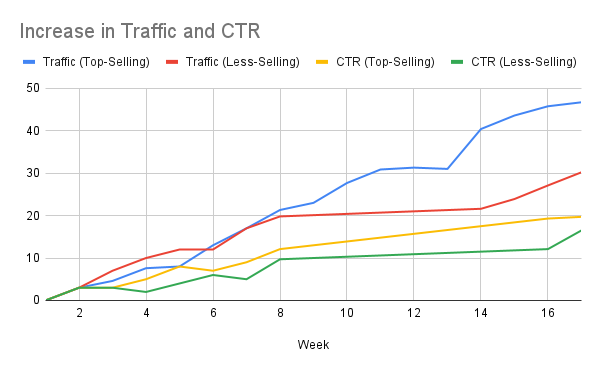
This ecommerce site is just one among many we’ve worked with and we’ve seen the same mistakes over and over again. To counter that, we’ve decided to share the top 3 mistakes we’ve seen in our experience as a leading digital marketing agency.
As of writing, Google supports 34 types of rich snippets. You may want to visit their official article on structured data for the full document but here’s the list.

Featured Guides
Product
However, a few enhanced snippets stand out from SERPs, according to a study:
Rating Result: In more than half a million SERPs, 48.11% of them have at least one “rating” result in the top 20 listings (Source: STAT). Ratings are visual indicators of how users have reviewed or scored a product, service, or piece of content.
Price-enhanced Snippets: From the same samples, 33.45% appear to have price-enhanced snippets. These snippets give users immediate access to important purchasing information without having to click through to the website.
It’s a common pitfall I’ve noticed across the board: many businesses barely scratch the surface when it comes to rich snippets. Google throws a whole toolbox at our feet—34 rich snippet types, to be exact—yet, so many limit themselves to the same one or two.
Why settle for just the basics when you can have so much more? Take a local shop, for instance. Sure, they flaunt their contact info, but what about shining a spotlight on glowing reviews or buzzing community events?
Let me tell you which industries can benefit most from rich snippets, and throw in some types that I think can make a real difference.
Running an ecommerce business? An ecommerce schema SEO strategy is non-negotiable. With rich snippets, your CTRs could skyrocket by up to 677%, bringing in 20-40% more traffic (Source: Neil Patel).
Imagine your product ratings, prices, and availability popping up directly in search results. You essentially have a digital storefront that’s always open and irresistible, making potential buyers more likely to click and purchase.
Now, let’s say you’re a huge retailer of sports shoes and gear looking to hire a BigCommerce SEO agency. Here are some schemas that can really make your products shine:


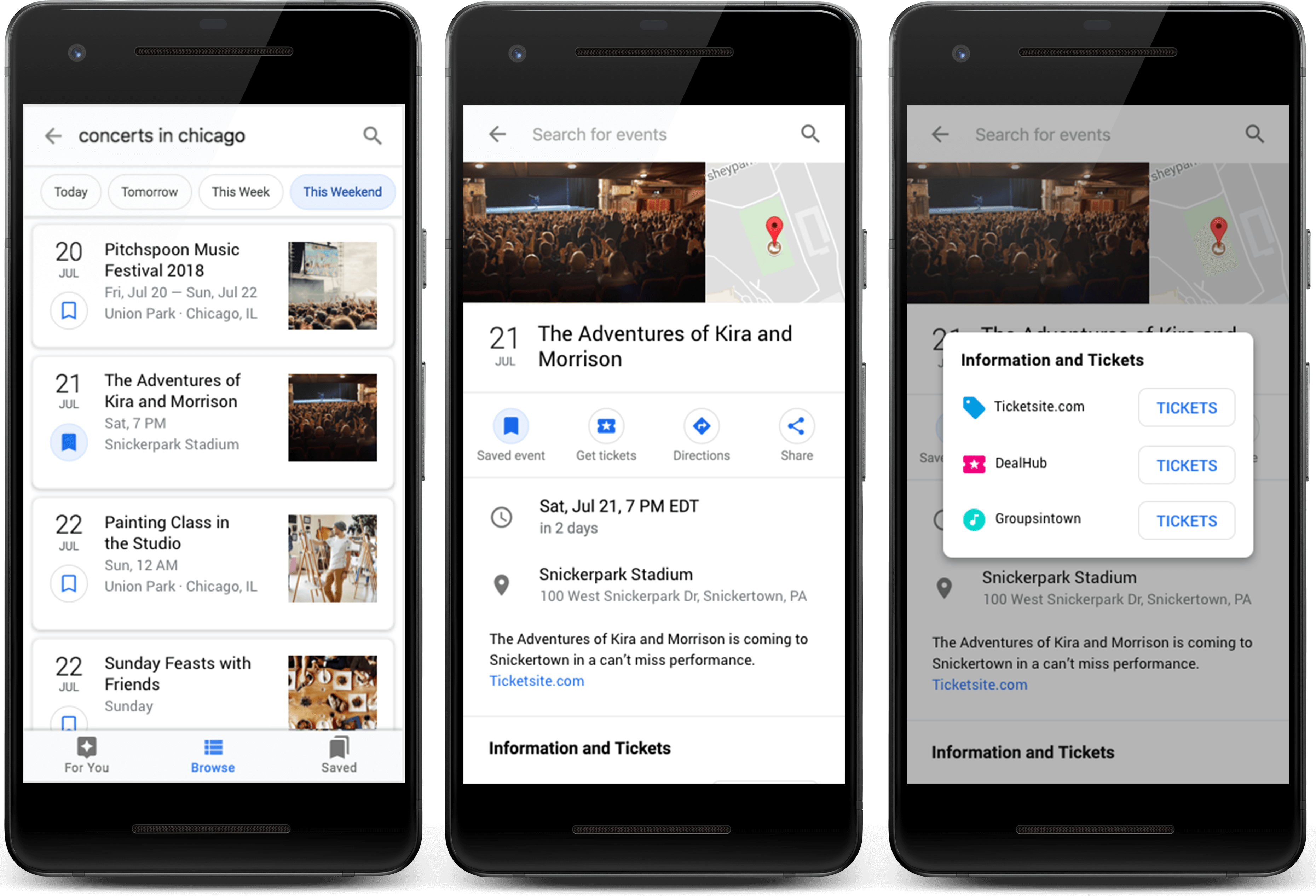
Source: https://developers.google.com/search/docs/appearance/structured-data/event
For SaaS (Software as a Service) websites, rich snippets can be a game changer. A SaaS SEO agency will help you highlight key features, customer testimonials, pricing plans, and unique selling points directly in search results through rich snippets which helps attract more qualified leads, enhance user trust, and improve overall click-through rates.
Schemas that can elevate your SaaS offerings include:

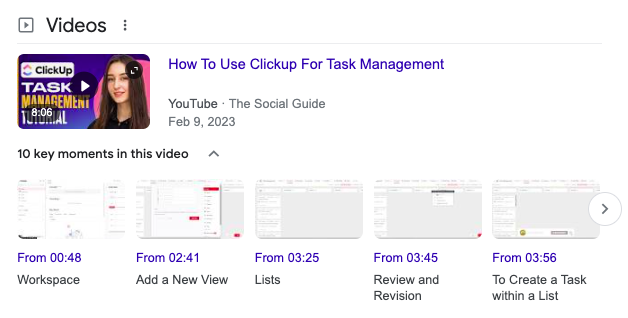
“Trust is everything in YMYL (Your Money or Your Life) industries.”
You’ve probably heard this if you’ve worked with a legal, finance, or healthcare SEO agency before. And this can’t be overstated. So, why not show your audience how legit you are when they’re scrolling through search results?
These schemas are essential here:

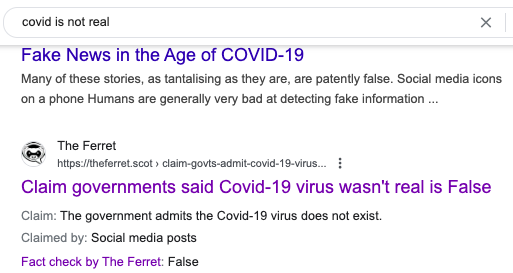
B2B (Business-to-Business) websites can also benefit greatly from rich snippets.
Showcasing services, case studies, and customer reviews directly in search results builds credibility and attracts more qualified leads. Detailed information such as service descriptions, client testimonials, industry awards, and certifications can highlight the expertise and reliability of a B2B service provider, making it easier for potential business clients to find and engage with their offerings.
Here are some schemas to spotlight your professional prowess:
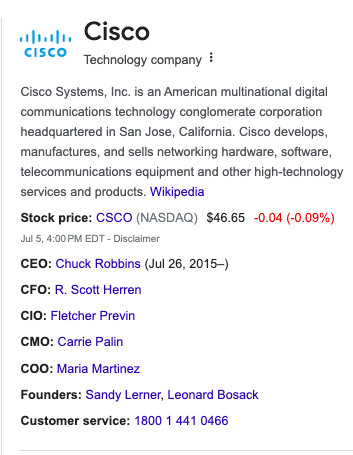
Remember, these are just a few of the types you can explore. Depending on your business, you can mix and match more snippets, but always with a strategic eye.
The guidelines are pretty straightforward:
Your markup has to mirror exactly what’s on your page. Think of a product review page: if you’re marking up those five-star reviews, they should be visible and real to the user clicking through.
Keep your content focused. If you’re marking up a book review, the page should be about that book, not hidden among ads for kitchen appliances.
Google’s got a no-nonsense policy on manipulation. No marking up irrelevant or misleading content to get more eyes on your site.
Skipping these rules can hit you where it hurts. For example, Google might just stop showing your snippets altogether.
We once worked with an online platform offering video tutorials and courses on various tech-related topics. The website contains a mix of free blog posts, tutorials, and premium course offerings. One day, they decided to boost their search presence by implementing rich snippets.
However, In an attempt to increase visibility, the platform started using the “Course” schema markup for all its content, including simple blog posts and introductory videos that do not qualify as full courses. This markup incorrectly suggests that each piece of content offers comprehensive learning materials, which typically include structured lessons, assessments, and certification—all features absent from the blog posts and many videos.
Google’s structured data guidelines require that the “Course” schema be used only for content that constitutes an educational course with a clear educational outline and learning objectives. The misuse of the “Course” markup on basic blog posts and non-course videos misleads users who expect structured educational experiences from the search results.
These were the consequences:
Google initially displays rich snippets for these items, enhancing click-through rates due to the perceived value of a structured course. However, once the discrepancy between the content and its markup is identified—either through algorithmic checks or user reports—the rich snippets for these pages are removed.
Because the misuse was widespread and deemed manipulative, Google issued a manual penalty. This action affected the site’s credibility and resulted in a significant drop in the platform’s search engine rankings. Organic traffic decreased by 32.5%, severely impacting the number of new subscriptions.
Let’s calculate how much was lost.
Original Monthly Revenue: $523,742.30
Decrease in Organic Traffic: 32.5%
Following the SEO penalty, the online learning platform lost approximately $170,216.25.
Now that we know what not to do, let’s break down the best practices for creating rich snippets.
Since we’ve already covered the various types of rich snippets, let’s focus on some best practices and strategies for selecting the most appropriate ones for your website:
Creating rich snippets requires implementing schema markup on your website, and Google’s Structured Data Markup Helper is a valuable tool for this. This helps search engines understand the content on your page and enables the display of rich snippets in search results.
To give you an example, I’ll generate a local business schema markup for my agency, Area Ten. My goal is whenever someone looks for an SEO Agency Australia-wide, our listing stands out in the search results with enhanced information.
Step #2.1: Select Data Type
Choose the type of data you want to markup from Step 1.
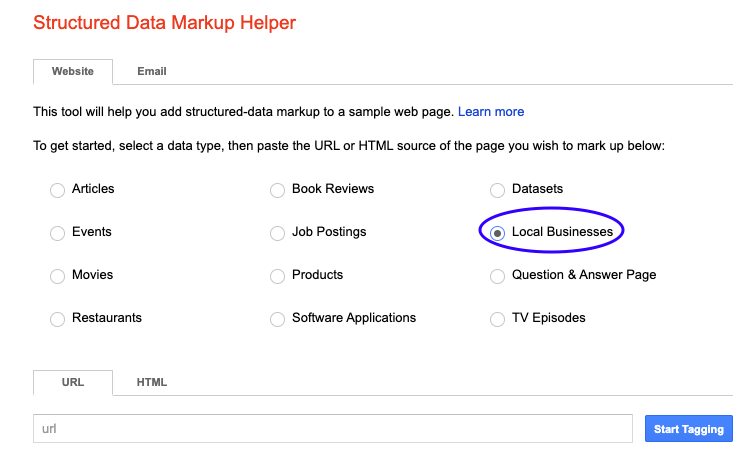
Step #2.2: Input URL or HTML
Enter the URL of the page you want to markup or paste the HTML source code.
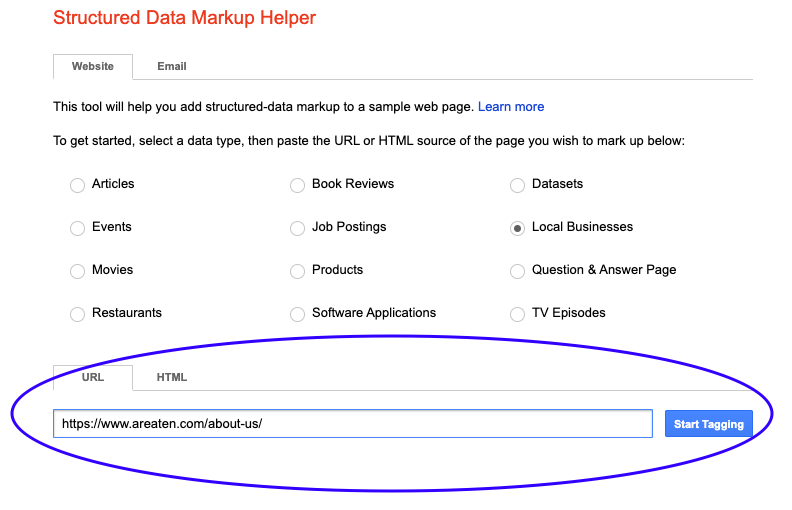
Step #2.3: Tag Elements
Use the tool to highlight and tag elements on your page (e.g., title, author, date).
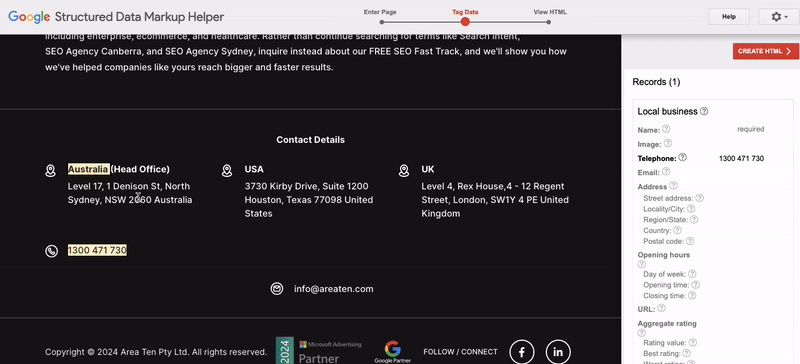
Step #2.4: Create HTML
After tagging, click “Create HTML” to get the generated schema markup code.

Step #2.5: Embed Schema
Copy the generated code or download the HTML and embed it into your webpage’s HTML within the <head> or <body> section.

Use Google’s Rich Results Test to check if your structured data is error-free and eligible for rich snippets. Simply enter your URL or code into the tool, and it will analyze your page for any issues.
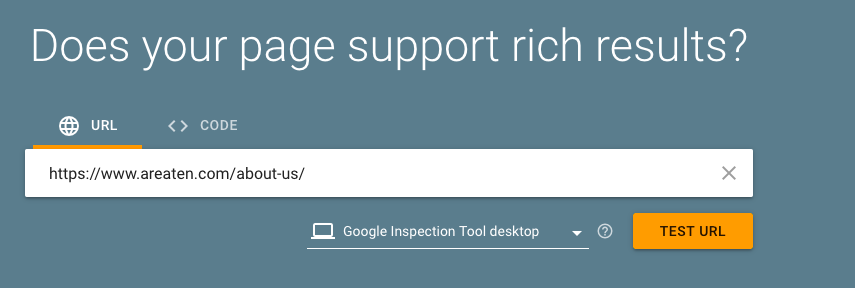
The process of creating rich snippets can also vary depending on the content management system (CMS) you’re using. Here’s how you can add rich snippets to two of the most popular CMS platforms: Shopify and WordPress.
Good news for those doing Shopify SEO – most themes already come with the standard product schemas, article schemas, etc. However, if you’d like to customize the schemas further, here’s what you can do:
Step 1: Access Your Shopify Theme Files
Navigate to your Shopify admin panel and go to Online Store > Themes > Actions > Edit Code.
Step 2: Locate the Appropriate Liquid Template
Identify the correct Liquid template where you want to add the schema markup. For example:
Step 3: Make tweaks to the Schema Markup to the Liquid Template
Step 4: Save Your Changes
After adding the schema markup, save the changes to your Liquid template file.
Most websites on WordPress use schema plugins as it is faster and easier than manually coding and implementing the schema. Here’s an example of how you can use a plug-in to generate a site-wide schema:
Step 1: Configure Site-Wide Schema Markup
First, provide basic information about your website:
Step 2: Set Up User Profiles
Go to Users > Profile to select and edit a WordPress user’s profile. Ensure the user’s first and last name are correct and choose the appropriate display name. Save changes by clicking the Update Profile button.
Step 3: Define Default Schema Settings
Set default schema markup for all your WordPress SEO content:
Step 4: Validate and Save Your Settings
Review the settings and make necessary changes. Ensure that your schema markup is correctly set up for all your posts, pages, products, and other content types. Save your settings to apply the schema markup site-wide.
You’ll probably not see much of an increase in CTR and traffic if your site is buried deep in search results.
Yes, rich snippets can appear even if you don’t rank high. But their effectiveness is maximized when coupled with a robust SEO strategy. Remember, rich results will only make an impact if your site is ranking well.
Now, how do you do both?
Search engines like Google use hundreds, if not thousands, of factors in their algorithms to determine which pages deserve to be at the top of the search results. Not all of these factors have the same effect on your website. It mostly depends on what your website or business is. Plus, these algorithms update several times a year too. In 2023 alone, we had 9 core updates.
For a deeper dive into how each industry can and should prioritize specific elements of their SEO to boost performance, you can check out our article on performing effective and customized SEO audits.
However, Google’s ranking system prioritizes five key factors that apply to all types of websites.

Google’s first task is figuring out what users are actually looking for. They use sophisticated language models that translate the brief search queries into useful content. For instance, if someone searches for terms like “improve website speed,” they’re likely also interested in key phrases such as “increase site load time.”
Having the same keywords or related terms in your content is like telling Google that you’re speaking the same language and can provide the information they truly need.
Once intent is understood, Google evaluates whether your content meets that intent. Aside from having the same keywords, your content needs to cover the topic comprehensively.
For example, if you’re aiming to rank for “healthy dog diets,” your page should provide detailed information including tips, nutrition facts, and types of dog food. Rich, varied content signals to Google that your page is a thorough resource on the subject.
Google wants to show the best quality content. This is where expertise, authoritativeness, and trustworthiness (E-E-A-T) come into play. To boost your E-E-A-T, make sure your content:
Even the best content won’t rank well if your website is hard to use. Google favors sites that are mobile-friendly and load quickly. So, make sure your site works well on smartphones and tablets, and optimize your images and code to improve load times.
Finally, Google uses information like your user’s location and search history to tailor results. For example, a search for “football” in the US will bring up American football, while in the UK, it’ll show soccer results.
To take advantage of this, focus on local SEO if you’re targeting a specific region. Use local keywords and create content that speaks to local interests and needs. Additionally, respect user preferences, like SafeSearch settings, to ensure your content is appropriate for all audiences.
Once your site is propelled to the top of search results, then you can unlock even more clicks and traffic by leveraging rich snippets.
We’ve covered a lot about rich snippets and how they can really boost your website’s CTR and traffic. Here are the main points to remember:
At Area Ten, we make no excuses. We solely deliver solutions—100% of the time. Want to see more and faster results from your schema implementation efforts? It’s time to supercharge your SEO strategy. It’s time to partner with Area Ten.
Book a free video consultation below to see how your SEO & Paid Media campaigns are performing against global benchmarks in your industry.
We’ll uncover tangible opportunities to grow your business in just 6 weeks, including: